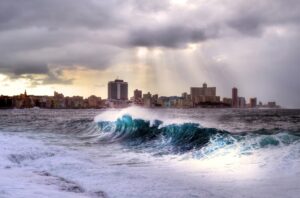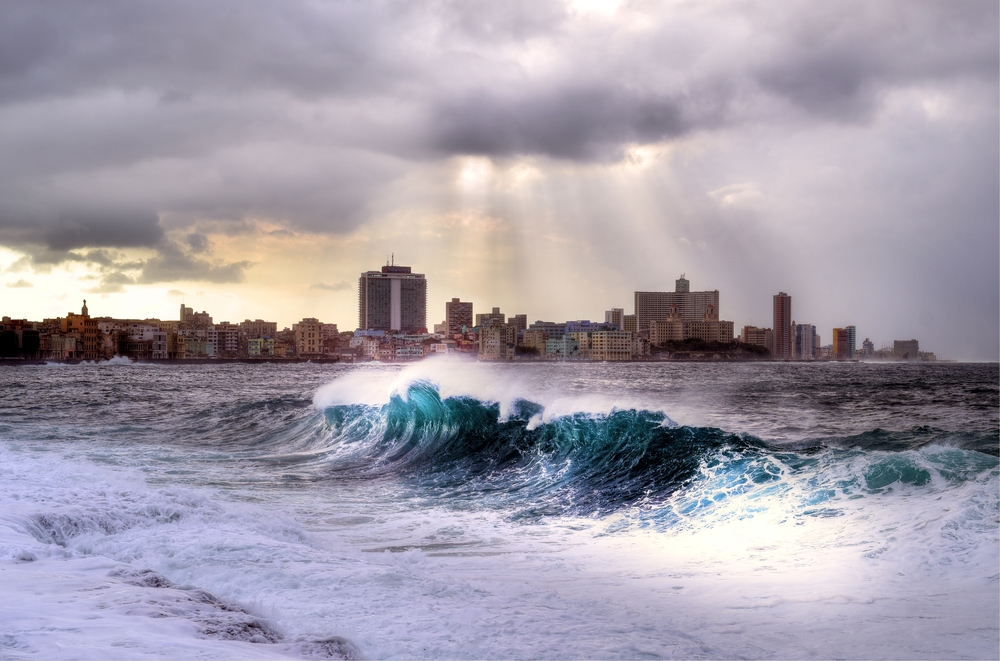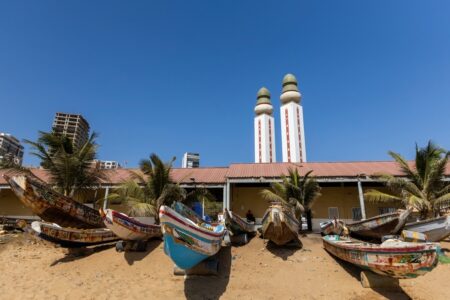Hurricane Melissa made landfall in Cuba yesterday (Oct. 29), bringing “significant” but “incalculable” damage, according to government authorities.
In a statement posted on X, Cuban President Miguel Diaz-Canel reported that over 735,000 people needed to be evacuated before the hurricane made landfall. By the time it arrived in the country, Hurricane Melissa had reportedly weakened from a Category 5 to a Category 3.
An approximate 10 to 20 inches of rainfall was estimated for Eastern Cuba, increasing the risk of flash flooding and landslides. In the first images released following the hurricane’s departure, citizens have already begun salvaging what they can from their homes, which are now turned to rubble. The hurricane has also reportedly blocked mountain roads and blown off roofs, particularly in the southwest and northwest regions. The 735,000 people evacuated in Cuba remain in shelters because they are unable to return home.
As of now, according to the Cuban Foreign Affairs Minister Bruno Rodriguez, the extent of the hurricane’s impact is still unknown and “incalculable.” Per Rodriguez, the island has also been left with “virtually no resources” as it deals with the aftermath of Hurricane Melissa.
President Diaz-Canel urged citizens to stay strong, adding that the government has already prepared for the “worst-case scenario” and that recovery efforts will begin once “conditions allow.”
“It has been a highly complex night, with significant damage reported,” wrote Díaz-Canel on X. “I urge our people to remain vigilant, to uphold discipline, and to continue taking all necessary precautions.”
Hurricane Melissa has already brought mass destruction to both Haiti and Jamaica.
In Haiti alone, at least 23 people, including children, passed away, and over 1,000 homes were flooded, per the technical manager for the Municipal Civil Protection Committee, Ronald Louis. Over 13 people are missing as tolls continue to rise.
Among the areas most impacted was Petit-Goâve, a coastal town where flooding caused widespread damage to homes. In the town, 10 children were reportedly killed and 12 people are still considered to be missing.
According to Haitian authorities, in southern Haiti, rain from Hurricane Melissa’s landfall also led to a river bursting, killing over 25 people in its impact.
Louis reiterated that aid is vital for the nation as it deals with the aftermath of Hurricane Melissa. Calling for hygiene kits, drinking water, shelters, sanitation kits, clothing and other material to help with flooding, he warned that, as the threat of rain looms, water could once again cause the same amount of damage as residents continue to evacuate.
Meanwhile, in Jamaica, authorities are still assessing the extent of the storm’s impact. Earlier this week, Hurricane Melissa made landfall in Jamaica as a Category 5 hurricane, bringing in destructive winds and rain.
St. Elizabeth Parish officials said that they have recovered four bodies. The town was battered by the storm, now left with damaged homes, torn rooftops and remaining debris. Black River, a historic port town in Jamaica, was also amongst the places most affected with authorities publicly claiming that the town was “no longer recognizable.”
As Jamaica continues to face the threat of further rainfall and possible landslides, approximately 77% of the country remains without electricity.
Organizations and other officials have already begun sending aid to Caribbean countries. The United States has also announced that several dozen disaster relief workers will be sent to areas affected by the storm to help with the aftermath, providing assistance through urban search-and-rescue teams.
As meteorologists continue to track Hurricane Melissa’s trajectory, the storm is now passing through the Bahamas as a Category 1 hurricane, bringing wind levels of 90 mph.








